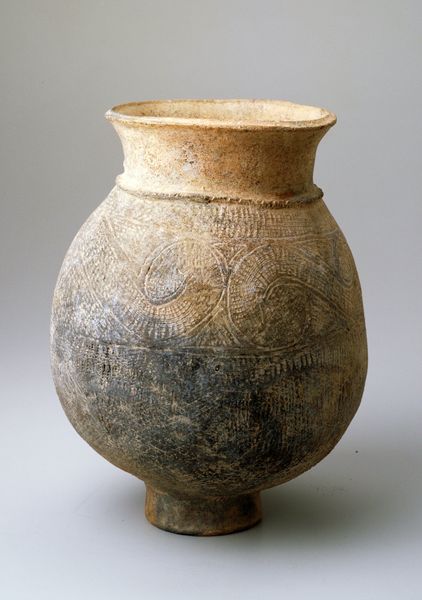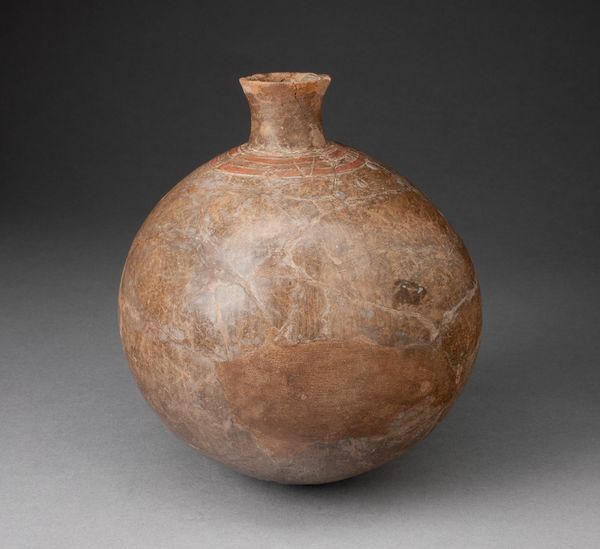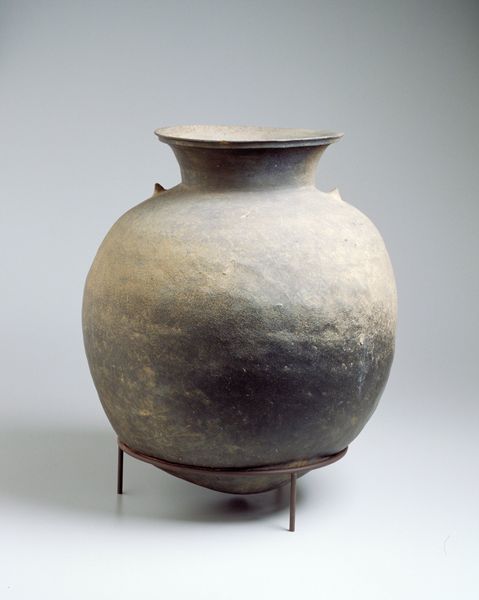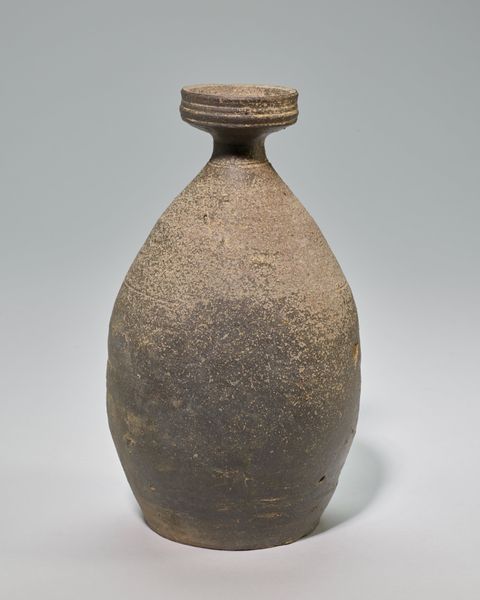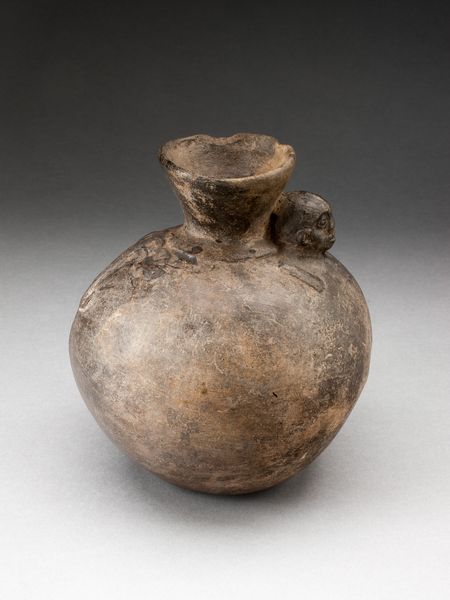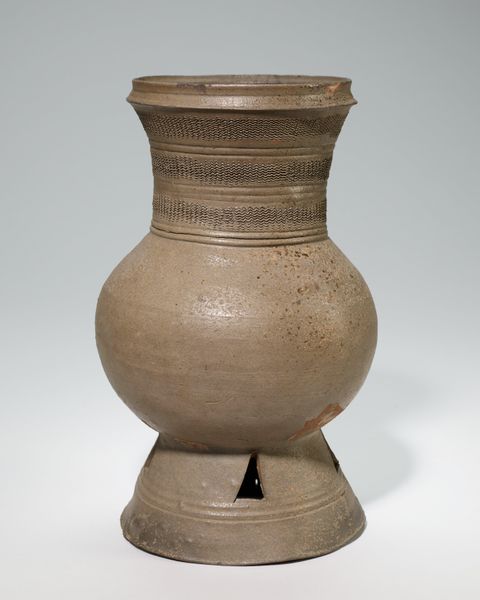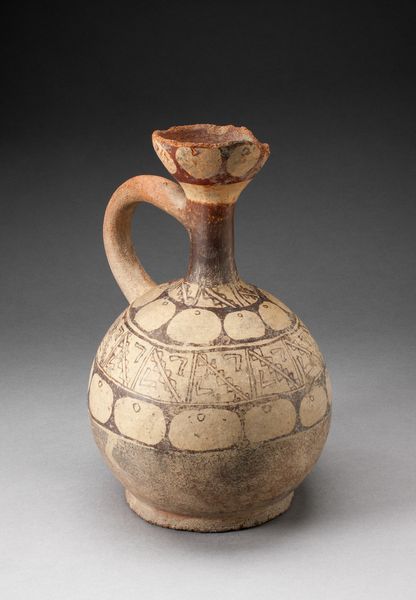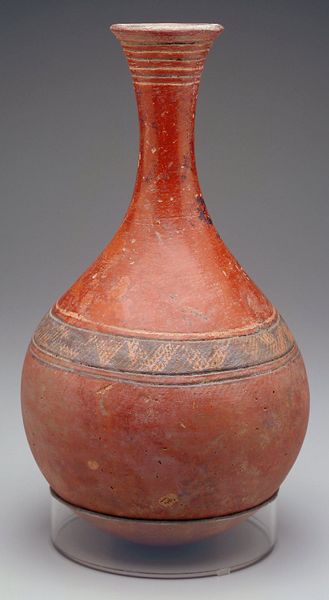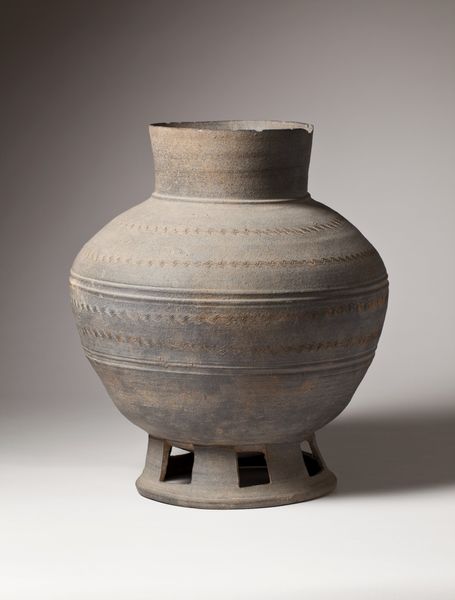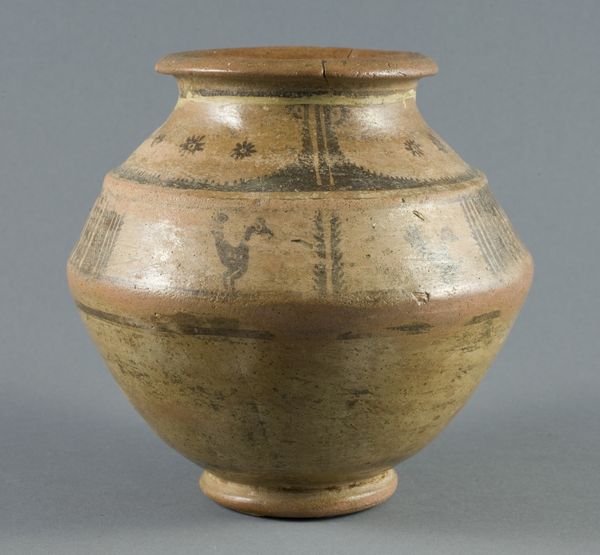
ceramic, earthenware, sculpture
#
african-art
#
sculpture
#
ceramic
#
earthenware
#
geometric
#
sculpture
#
ceramic
Dimensions: 10 x 9 in. (25.4 x 22.86 cm)
Copyright: Public Domain
Curator: Before us stands a striking ceramic piece known as the "Double-Necked Vase," dating back to the 19th century, here on loan from the Minneapolis Institute of Art. Editor: Its form is immediately arresting. The stark silhouette and earthy tones lend it an air of profound antiquity, as if unearthed from some ancient ritual site. Curator: The craftsmanship demonstrates careful hand-building techniques, primarily in earthenware. Observe the smooth curves contrasting with the geometric etched band across its central expanse. Notice how the dual spouts emerge from a unified base. This bifurcation evokes balance and unity. Editor: It reminds me of conjoined twins, joined yet separate destinies or pathways converging into a single origin. The darkness of the earthenware contrasts nicely with the linear, almost skeletal pattern encircling its body—symbols etched perhaps for protection or storytelling. The two openings could represent the duality in life and death. Curator: I appreciate that intuitive interpretation. Looking more objectively, we might interpret the etched geometric patterns less as narrative devices and more as a rigorous application of structural principles. The repeating triangles suggest self-similarity, which elevates pure form over semantic content. Editor: Even as abstract decorations, don't these repeating motifs inherently carry deeper resonance, possibly serving as reminders of cultural narratives passed through generations, embedded with a collective memory even the artist might not fully grasp? After all, symbolism is often at the confluence of intent and tradition. Curator: Perhaps. In analyzing pure forms and compositional structure we appreciate how its contrasting curvatures give way to geometric inscriptions which lends an almost sentient feeling when considering its dual openings and singular form. The geometric designs represent a perfect demonstration in formalism. Editor: Precisely! And through iconography we decode the ancestral knowledge preserved within. I see more than clay, but human touch, stories, struggles and traditions given solid expression. Curator: Quite, which offers an enriched awareness when contemplating its history, purpose, and form. Editor: It has definitely ignited within me a powerful curiosity.
Comments
No comments
Be the first to comment and join the conversation on the ultimate creative platform.
